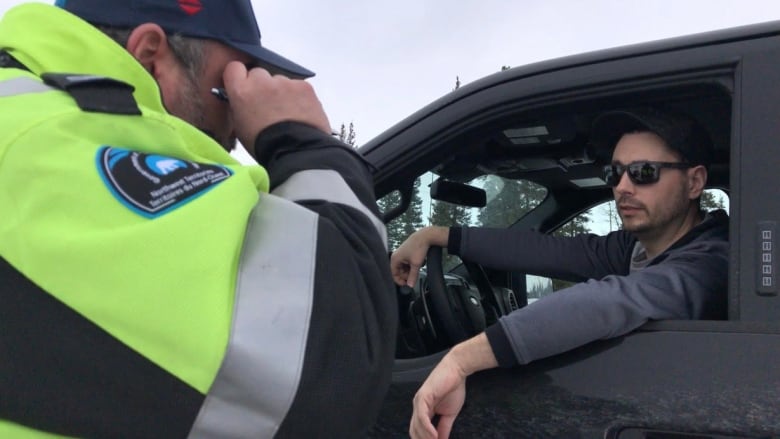N.W.T. has some of the most strict gathering and self-isolation restrictions in the country
Toronto doctor calls N.W.T.'s restrictions 'fantastic' as it enters month six without COVID-19 case

As the nation's two largest provinces clamp down on gathering limits amid a spike in COVID-19 cases, the Northwest Territories remains one of the most restricted provinces and territories in Canada.
While the N.W.T. comes upon six months without a case of COVID-19, some in the territory including those in the business community along with healthcare professionals are growing restless, questioning why the restrictions remain so strict.
But the North isn't the only jurisdiction taking that approach, according to Dr. Michael Gardam, an infectious disease physician based at a Women's College Hospital in Toronto.
It's clear, he says, it's working.
"Places that have really low numbers in the world — the Maritimes in Canada, the North in Canada, New Zealand — have tended to maintain these very strict sort of rules all the way through," Gardam told CBC.

"Those are very valid strategies that I support right now because you've been able to maintain basically having no cases and as long as you're able to do that with some moderate level of person freedom, I think that's fantastic.
"Whether you can maintain it or not, time will tell."
Gathering restrictions
Since late September, Quebec and Ontario have been seeing the number of new cases and hospitalizations spike and are in the middle of what some health officials are calling a second wave. Both provincial governments have tightened gathering limits and forced the closing of businesses to try and restrict the spread.
Outside of those two provinces, the N.W.T. has the tightest restrictions around gatherings and self-isolation in the country, even while the weeks roll by without any sign of the virus in the territory.
Gatherings in personal dwellings remain at a 10 person maximum. Indoor gatherings have a limit of 25 people and outdoor 50. Visitors aren't allowed to enter the territory without an exemption from health officials and almost everyone entering the N.W.T. must self-isolate for 14 days.
The restrictions have remained unchanged since June, while other jurisdictions with active cases have eased up.
In Alberta, the province with the most lax gathering limits, people can have an additional 15 people in their home outside of their family unit. Indoor gatherings range from 50-100 people and outdoor gatherings range from 100-200 people depending on the event. There are no restrictions or self-isolation guidelines for travellers within Canada.

Kandola defends restrictions
The N.W.T.'s Chief Public Health Officer Dr. Kami Kandola has long maintained that the strict restrictions in the territory are essential in a territory with limited health care capacity and with some communities where living conditions are crowded.
At a press conference earlier this month, Kandola also said that just because our borders remain essentially closed doesn't mean restrictions can be lifted.
"We have had 20,000 self isolation plans submitted since the start of our travel restrictions and self isolation policy," Kandola said.
"With that amount of traffic in and people not always complying, having crowded settings and having unlimited gatherings is not a very conducive situation to limit the spread of COVID[-19]."

Gardam says an outbreak in northern Canada would be a disaster.
"I was in one of Canada's epicentres in the spring and it was terrifying to watch our hospitals fill up with COVID[-19] patients. We barely got through the spring without overflowing with COVID[-19] patients. It was that close," he said.
'We are all tired and exhausted'
Nicola Lacetera, a behavioural economist at the University of Toronto, says he isn't surprised that some northerners are becoming restless.
"It's understandable. We are all tired and exhausted," he said.
Lacetera first studied compliance with physical distancing restrictions during the start of the pandemic in Italy. He says that the fewer the cases there are in a jurisdiction, the harder it can be to get residents to comply with restrictions.

He said it's essential local governments have consistent and transparent communication with its community.
"If someone never saw anyone having COVID[-19], you know they don't have any friends or family [with the virus], that person may be led to believe that the spread is very limited or get all the way to conspiracy theories. Credible communication by the government about what's going on might help correct this essentially wrong belief and give people a clear sense that we are not out of it yet," he said.
"But if the government loses credibility then all of these theories might get reinforced. People start to believe that there is no danger because there are so few cases around."
When asked which Canadian jurisdiction had the best response to the COVID-19 pandemic, Gardam said there really is no way to tell.
"Ask me a year from now who did it the right way because it honestly changes every week," he said.